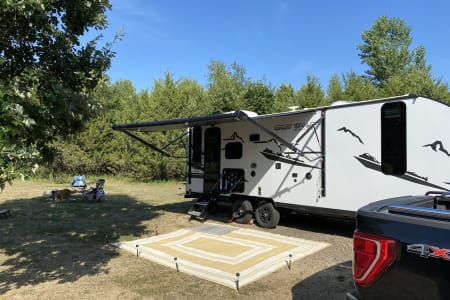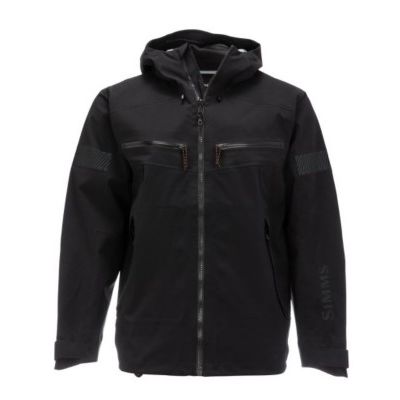Today's Best Fishing Times
Get the best fishing times for Amber Lake with Lake-Link's Fishing Forecast. SEE MORE


Share Your Catch & Win!
Frequently Asked Questions About Amber Lake, MN
- How big is Amber Lake?
- How deep is Amber Lake?
- What kind of fish can you catch in Amber Lake?
- What are the closest cities to Amber Lake?
- Are there places to stay in the Amber Lake area?
- Are there boat launches on Amber Lake?
- Are there places to eat and drink near Amber Lake?
- What is the average air temp for Amber Lake?
How big is Amber Lake?
How deep is Amber Lake?
What kind of fish can you catch in Amber Lake?
Other fish species in the lake include Emerald Shiner, Fathead Minnow, Freshwater Drum, Golden Shiner, Green Sunfish, Hybrid Sunfish, Johnny Darter, Orangespotted Sunfish, Quillback, Spotfin Shiner and White Sucker.
What are the closest cities to Amber Lake?
Are there places to stay in the Amber Lake area?
More Lodging Options
Are there boat launches on Amber Lake?
Are there places to eat and drink near Amber Lake?
Explore the Amber Lake area in a RV
Are you looking for an adventurous vacation option that won't break the bank? Look no further than renting an RV! Contrary to popular belief, the process is much simpler than you might imagine. With just a few easy steps, you'll soon be experiencing the ultimate freedom and convenience of exploring the open road in your very own recreational vehicle. And the best part? RV travel can save you up to 60% compared to other types of vacations! With the money you'll save, you'll be able to travel even more and create unforgettable memories along the way. So why wait? Start planning your next adventure today with an RV rental. Learn more about renting a RV.




History & Status of the Fishery
Amber Lake is a 180 acre lake with a max depth of 19 feet and 108 acres of littoral zone (15 feet or less). Amber Lake is part of the "Fairmont Chain of Lakes" and is within the city limits of Fairmont. The Fairmont Chain of Lakes (from headwaters to mouth) is comprised of Amber Lake, Hall Lake, Budd Lake, Sisseton Lake, and George Lake which are natural impoundments of Center Creek in the Blue Earth River Watershed. A dam built on George Lake 1939 increased water storage and depth of each lake. Dredging in the 1970's to early 1990's also increased the depth of Budd and Hall Lakes. Amber Lake is the first lake and one of the deepest of the lakes with a watershed-to-lake ratio of 59 to 1 indicating a large influence of the watershed effects in the lake. The watershed has many factors that contribute to degraded conditions within Amber Lake. Agriculture and municipal sources of pollution are both present within the watershed. Many miles of agricultural tile move nutrient rich water to Amber Lake without wetland treatment and the city of Fairmont operates a storm water runoff system that empties roadway drainage into the lakes. These are the same lakes that the city of Fairmont draws drinking water (Budd Lake directly downstream), so it is imperative to reduce negative influences of water impairments to improve the water quality in the Fairmont Chain of Lakes.
Amber Lake is managed primarily for Walleye and Muskellunge while Yellow Perch, Black Crappie and Bluegill are managed secondarily. Fish population assessments have been conducted every 4 to 7 years since 1982 with an initial assessment conducted in 1971. A recent fish population assessment was conducted during the week of August 22, 2022 to analyze the current species composition in Hall Lake and to determine changes in the fish community. Fish community changes over time tell us a lot about the health of an aquatic environment.
During the fish assessment, water quality in Amber Lake was poor due to a heavy algae bloom. The algae bloom contained blue-green algae and surface water pH (9.25) was higher than Western Corn Belt Plain lakes (8.3-9.0). When pH is high, it is a result of a chemical process of blue-green algae photosynthesis in the upper part of the water column and causes alkaline water that can affect fish gills. This can have detrimental consequences to the fish community by forcing them to deeper depths. However, the deeper water, during an algae bloom, is often characterized by low dissolved oxygen. At the time of the survey dissolved oxygen was below 5.0 ppm (considered stressful to fish) as depths increased to greater than 12 feet. The combination of higher pH at the surface and lower dissolved oxygen at greater depths puts fish into a "squeeze" by forcing them to the middle of the water column. As the bloom continues to progress, this squeeze can be very stressful and/or result in water that is inadequate to sustain life if the bloom occurs over a long period of time. The final result can trigger a summerkill of fish, particularly those sensitive to low dissolved oxygen such as Walleye, Crappies, Yellow Perch, Muskellunge, and Bluegill. Fortunately, Amber Lake did not experience a summerkill and water quality improved shortly after the algae bloom.
Since Walleye are the primary species of management, they are most important to track in Amber Lake. Since 1993, Walleye have been at or below the long-term gill net catch rate average of 3 per gillnet. In 2022, the catch rate was 2.5 per gillnet while the trap net catch rate was 1.9 per trap net. The gill net and trap net catch rates both increased from 2018, when the gill net catch was 0.5 per net and the trap net catch was 1 per net. Lower Mississippi Strain (LMS, Lake Sarah egg take) Walleye fry were stocked in Amber Lake in 2019, 2021, and 2022. Additionally, 2,214 fingerling Walleye (Upper Mississippi River Strain) were stocked in 2019. Walleye in the gill net and trap net sample ranged in length from 6.6 to 26.3 inches with 4 different ages (Ages 1-4). Three of the 4 year age groups present were from years where LMS Walleye fry were stocked, indicating that LMS Walleye are establishing well each year. Average size of Walleye in the sample was good with more than 50% of the fish over 15 inches. Health of each fish appeared good too. Therefore, the Walleye population appears to be doing well and potentially increasing in abundance due to a change in stocking strategy utilizing LMS Walleye fry. Angling for Walleye has been good in Amber Lake since 2020 and should continue with most fish at a harvestable size.
Muskellunge have been managed in Amber Lake and the entire Fairmont Chain of Lakes since 2016. Muskie fingerling have been stocked in even years with 314 fingerling in each year, except 2020 due to Covid related shutdown of spring egg take operations. To make up for the missed stocking in 2020, the Fairmont Chain of Lakes was stocked in 2021. No Muskies were sampled during netting in Amber Lake in 2022, but reports from anglers indicate that the original stocking in 2016 was successful and Muskies near 40 inches have been reported. One 37 inch Muskie was sampled in a trap net on Hall Lake during the summer of 2022. A large frame trap net survey will be conducted on the Fairmont Chain of Lakes in 2024 with recapture surveys in 2025 and 2026 (if necessary). Continued Muskie management will help to add a consistent top predator to Amber Lake and the Fairmont Chain that historically was missing within the Chain of Lakes.
Yellow Perch relative abundance has been less than the long-term gill net catch rate of 15.9 since 1982 except 2011 when the catch rate was 39.0 per gill net. In 2022 the catch rate was 2.5 per gill net. Yellow Perch in the sample ranged in length from 8 to just under 10 inches. Yellow Perch have not been stocked into Amber Lake. They are self-sustaining, but potentially limited by habitat degradation due to low aquatic plant and woody debris abundance. Additionally recently illegally introduced Yellow Bass in 2013 have now taken hold in Amber Lake and could be occupying a similar niche and potentially exclude Yellow Perch to some degree. Continued monitoring is necessary and potential stocking may be warranted in the future.
Black Crappie have exhibited a different trend, compared to Yellow Perch, since 1987. Generally, the relative abundance of Black Crappie has remained above or near the long-term gill net average of 6.7 per net. Since 1987, 5 out of 7 fish assessments have had Black Crappie relative abundance near or exceeding the long-term average of just under 19 per trap net. More impressive is an increase in size structure of Black Crappie since 1997. Currently, 100% of the fish in the sample were over 7.9 inches. Black Crappie ranged in length from just under 8 to nearly 12.5 inches with an average length of 9.4 inches in the trap net sample. Health of Black Crappie was above average with many plump fish. Overall, Black Crappie have been resilient in the Fairmont Chain of Lakes. Black Crappie are able to thrive in degraded aquatic systems and can spawn without aquatic vegetation or woody debris. Angling for Black Crappie should remain good in the Fairmont Chain of Lakes particularly if Yellow Bass don't become a nuisance while fishing for crappie.
A bright spot in the Amber Lake fish community is Bluegill abundance. Bluegill were caught in trap nets at a rate of 13.9 per net, the greatest catch rate ever observed in Amber Lake. Bluegill ranged from nearly 4 inches to just over 9 inches with a mean length in the 7 to 8 inch range. Overall body condition of each fish was excellent indicating ample food exists. All signs point to excellent angling for Bluegill which will provide a unique opportunity in Amber Lake over the next several years. With an average length approaching 8 inches, many harvestable Bluegill should be available.
Other species sampled in Amber Lake were Bigmouth Buffalo, Black Bullhead, Channel Catfish, Common Carp, Freshwater Drum, Largemouth Bass, Quillback Carpsucker, White Crappie, White Sucker, Yellow Bass, and Yellow Bullhead. These species, except Yellow Bass, are typical residents of degraded aquatic lakes. Channel Catfish and Freshwater Drum have been the most abundant of the species listed since the early 1990's. Increases in Channel Catfish and Freshwater Drum relative abundance can lead to competition with Walleye, Yellow Perch, and even Black Crappie. However, it appears that Yellow Perch are the most affected. Interestingly, Common Carp relative abundance has generally declined in Amber Lake since 2001. However, there was a slight increase in numbers in 2022 with 6 per gill net and 18.7 per trap net. This slight increase in catch rate during the survey follows 2 commercial seine hauls done towards the beginning of March 2022, when over 1200 pounds per acre of Bigmouth Buffalo and Common Carp were removed. There may be an ability to continue to suppress the Common Carp population through exclusion of backwater spawning habitat and continued predator management including Muskie stocking. However, in 2012, the Fairmont Chain of Lakes was confirmed to have Yellow Bass. Yellow Bass were most likely introduced through illegal stocking. Since 2012, they have expanded in relative abundance in Hall, Budd, Sisseton, and George Lakes. During 2022, Yellow Bass were sampled for the first time in Amber Lake with 12 per gill net (0 per trap net). Several high water events in 2018 and 2019 could have led to an introduction of Yellow Bass into Amber Lake, with those fish not showing up in the summer 2018 netting.
Overall, it appears that Amber Lake is maintaining an adequate abundance of Walleye, potentially increasing. Yellow Perch, however, appear to be decreasing and stocking may be necessary to sustain the population. Black Crappie and Bluegill are doing much better in Amber Lake and both could produce a decent fishery over the next several years. Habitat improvement projects could positively influence the fishery. There are options to allow trees that fall into the lake to stay and provide woody habitat for refuge or spawning. Get out and enjoy Amber Lake, a great opportunity awaits!
What is the average air temp for Amber Lake?
More Nearby Lakes To Explore
There's more lake's to explore around Amber Lake...| DISTANCE | ACRES | MAX DEPTH | |
| Mud Lake | 0.7 mi | 37 | |
| Hall Lake | 1.1 mi | 548 | 27 ft |
| Mud Lake | 1.2 mi | 72 | |
| Budd Lake | 2.3 mi | 228 | 23 ft |
| Sisseton Lake | 3.1 mi | 138 | 19 ft |
| Willmert Lake (Main Bay) | 3.2 mi | 335 | 8 ft |
| George Lake | 3.8 mi | 83 | 11 ft |
| Willmert Lake (South Bay) | 3.9 mi | 361 | |
| Pierce Lake | 4.1 mi | 452 | |
| North Silver Lake | 4.8 mi | 203 |

















